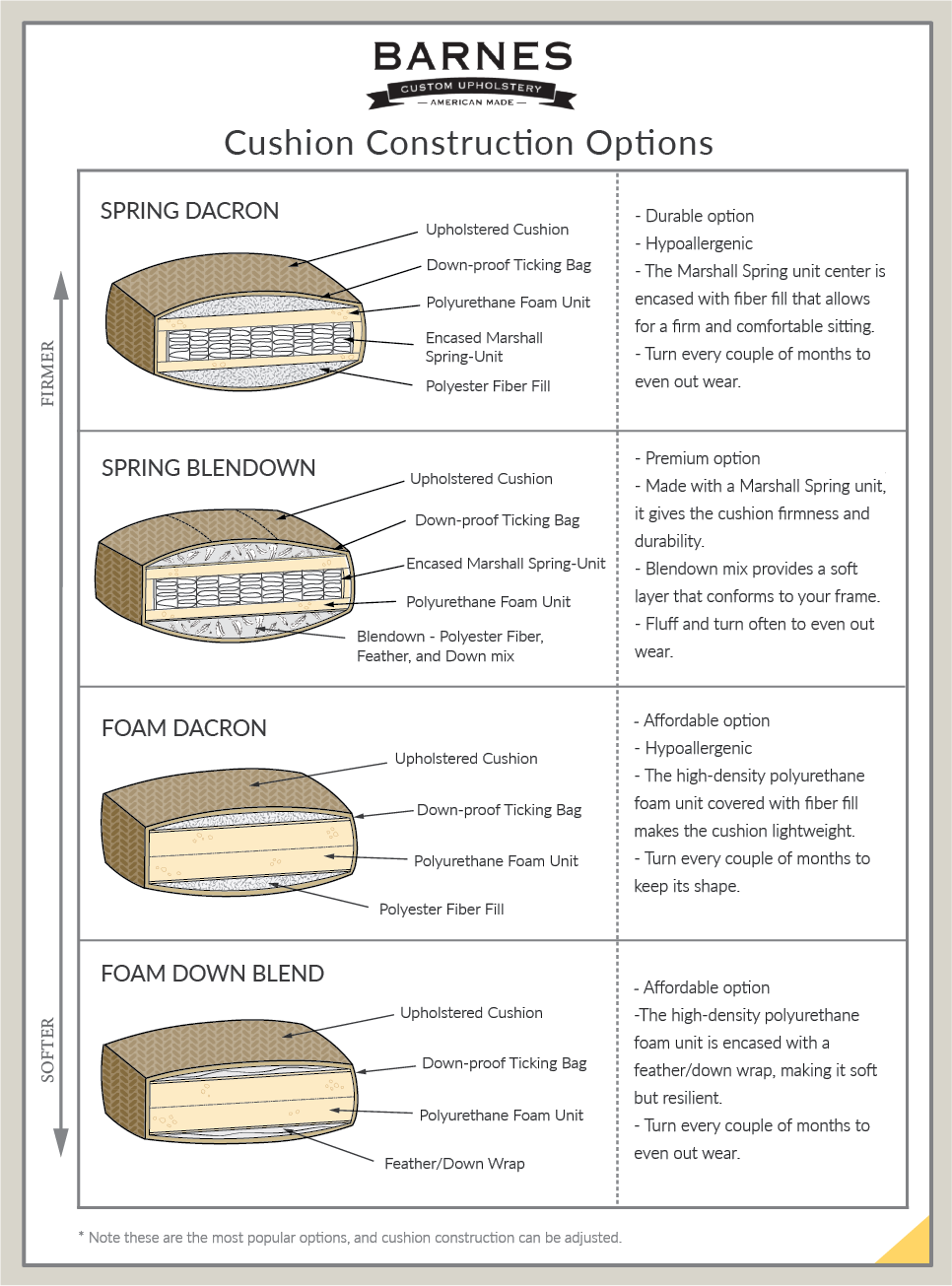Imagine after buying a new sofa from a furniture retailer and your cushions are starting to sag within the first year. Sagging cushions are normally the first indicator that poor production methods and cheap materials were used. Not only are they uncomfortable, but they could be putting your health at risk. For these reasons, knowing your cushion options is vital to selecting one that accommodates your needs. This article highlights the assembly process of our standard sofa cushion unit as well as the alternate options available to you.

Construction of our Spring Blendown Cushion
The Spring Blendown cushion is the most luxe option we offer and it’s also our standard unit. Our cushion unit follows a multitude of steps to ensure that it’s constructed to the utmost perfection. The first step is to determine the necessary dimension, and this depends on the size and style. High-density polyurethane foam is then cut into indicated dimensions. Foam railings or strips are adhered by a layer of spray adhesive to the edge of the first layer of foam.
Next, the Marshall Spring Unit is placed and adhered to the first layer of foam. These springs are also typically found in sleeping mattresses. They are 6×6 coils that measure approximately 3.5” tall that are individually wrapped in a cotton fabric, which keeps them from squeaking, and held together by wire clips. Each spring can move independently enabling it to conform easier to one’s body. They can also be rearranged and reconnected to fit any cushion size or shape. Coils found in the unit give a cushion firmness that allows for it to hold up better than a cushion made of just foam. Once the Marshall Spring unit is placed a second layer of foam encases it. A layer of polyester fiber is put across the front partition of the foam-spring unit to give it a smooth rounded edge. The unit is then set aside to prepare the ticking bag, which encloses the unit and filling.
In our shop, the down-proof ticking bag is sewn to the cushion size and consists of three pockets in which the middle one has a zipper for the foam-spring unit to be inserted. The outer two pockets are filled with our blendown which is a mix of 50% polyester fiber fill and 50% down and feathers. The down and feather mix is 90% feathers and 10% down. The polyester fiber fill gives the cushion resilience while the feathers provide an element of softness; together they make an ideal filling. Channels run across the ticking bag to spread the filling out evenly and prevent any clumping and settling. The ticking bag also prevents any feathers migrating out from the cushion.
The following step is that filling pockets are sewn shut and the spring-foam unit is inserted. All of the ticking bags are weighed before the spring-foam units are inserted to ensure that the same amount of filling is placed so that the cushions sit evenly. Finally, the completed ticking bag is placed into the cushion cover.
